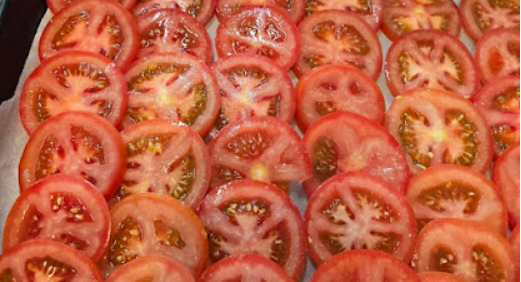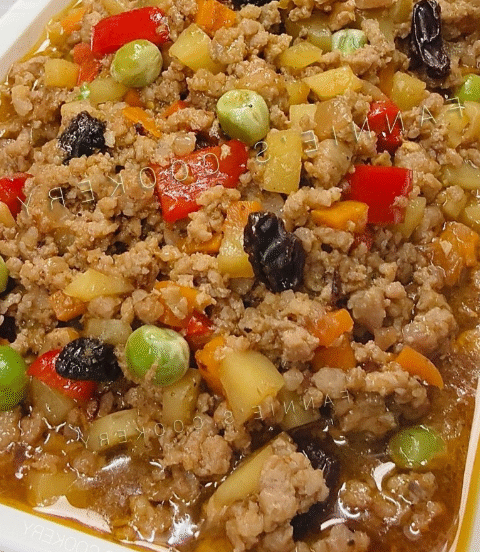Scientists Reveal That Consumption of Tomatoes Causes More Than Just a Burst of Flavor
You slice it for a sandwich. You toss it in salad. You simmer it into sauce. The tomato — juicy, tangy, vibrant — seems like just another ingredient. But what if this everyday fruit (yes, botanically a fruit!) is one of the most powerful allies for your long-term health? Far from being just a flavor booster, the tomato is now recognized by scientists as a functional food — a natural food that delivers profound health benefits beyond basic nutrition.
Introduction: Why Tomatoes Are More Than Just Flavor 🍅
The tomato is often underappreciated. We think of it as a mere supporting act—added to burgers, pizzas, sauces—but recent scientific studies suggest it deserves center stage. From cardiovascular health to skin protection, from cancer risk reduction to nutrient-rich vitamin content, the tomato is proving to be a nutritional powerhouse.
In this article, you’ll discover what science has uncovered about:
- Key nutrients and compounds in tomatoes
- How those components benefit your body
- Real-life usage, health tips, and safety considerations
- Nutrition breakdown
- Answers to frequently asked questions
What’s Inside a Tomato: The Nutrient & Phytochemical Profile
Rich in Vitamins and Minerals
- Vitamin C: Powerful antioxidant helping immune function and skin health.
- Vitamin A (as β-carotene and other carotenoids): Supports vision and healthy skin.
- Vitamin K1: Important for blood clotting and bone health.
- Potassium: Helps regulate blood pressure and fluid balance.
- Folate (Vitamin B9): Essential for DNA synthesis and repair; especially important during pregnancy.
Powerful Antioxidants & Phytochemicals
- Lycopene: The red pigment in tomatoes, linked with reduced risk of several cancers and heart disease.
- Beta-carotene, lutein, and zeaxanthin: Support eye health and protect against oxidative stress.
- Flavonoids and phenolic compounds: Help fight inflammation and oxidative damage.
Health Benefits Backed by Science
Heart Health and Blood Pressure Regulation
Tomatoes are a good source of potassium and antioxidants which support healthy blood vessels. Lycopene helps reduce LDL (“bad”) cholesterol and protects against oxidation that contributes to vascular damage. Research shows tomato-rich diets may be associated with lower risk of heart disease and reduction in blood pressure. 👩🔬
Cancer Prevention Potential
Lycopene has been especially studied in prostate cancer, where several epidemiological studies have found that high consumption of tomato-based foods correlates with reduced risk. Antioxidants help prevent DNA damage that can kick off cancerous changes.
Skin Protection from Sun Damage
The compounds in tomatoes, especially lycopene and beta‑carotene, may protect skin cells from ultraviolet (UV) light damage. Diets high in these protectants can reduce redness and sensitivity after sun exposure.
Improved Vision and Eye Health
Tomatoes are rich in lutein and zeaxanthin. These carotenoids accumulate in the retina and may reduce the risk of age‑related macular degeneration (AMD) and cataracts.
Anti‑Inflammatory Effects & Overall Wellness
Beyond specific disease prevention, tomatoes have compounds that help dampen chronic inflammation, support immune function, and promote detoxification pathways in the liver. Consistent intake supports slower aging and better tissue repair.
How to Include Tomatoes for Maximum Benefit
Cooking vs. Raw: What’s Best?
Cooking tomatoes (e.g., in sauces) increases the bioavailability of lycopene—heat helps release it. However, raw tomatoes preserve more vitamin C. A combination of both raw and cooked works best.
Pair Wisely: Fats Help Absorption
Lycopene is fat‑soluble, which means eating tomatoes with a small amount of healthy fat (olive oil, avocado, nuts) boosts absorption dramatically. A drizzle of olive oil over a tomato salad isn’t just tasty—it’s smart.
Choose Variants: Colors, Varieties, Whole Fruit vs. Processed
Different tomato varieties (cherry, vine, heirloom) have slightly different phytochemical profiles. Processed tomato products (paste, sauce, juice) often have concentrated compounds. Be mindful of added salt / sugar.
Nutrition & Health Benefits Table
| Component | Amount per 100 g Fresh Tomato | Health Benefit |
|---|---|---|
| Calories | 18 kcal | Low energy, aids in weight management. |
| Water | ≈ 95 g | Hydration; supports skin, digestion. |
| Vitamin C | ≈ 14 mg (≈ 16% DV*) | Antioxidant; immune booster, skin regeneration. |
| Vitamin A (as β‑carotene) | ≈ 833 IU (≈ 25% DV*) | Good for vision & night‑vision. |
| Vitamin K1 | ≈ 7.9 µg (≈ 7% DV*) | Clotting; bone health. |
| Potassium | ≈ 237 mg | Blood pressure regulation; heart function. |
| Folate (Vitamin B9) | ≈ 15 µg | DNA repair; pregnancy support. |
| Lycopene | Varies—much higher in cooked/processed tomato | Antioxidant; reduced cancer, heart disease risk. |
| Carbohydrates (net) | ≈ 3.9 g | Energy; balancing effect on blood sugar. |
| Fiber | ≈ 1.2 g | Digestive health; satiety. |
*DV = Daily Value, based on a 2,000‑calorie diet.
Safety, Recommendations, and Health Tips from the Experts
The Advice of Expert Chefs & Nutritionists
According to Chef Gordon Ramsay, “A tomato isn’t just a garnish—it’s a foundation. Use it carefully, treat it with respect, and it will reward you in flavor and health.”
Chef Ina Garten likes slicing vine‑ripened tomatoes with just salt, olive oil, and basil—“you taste every layer of goodness, and that raw vitamin C and those aromatics are unbeatable.”
Nutritionists suggest aiming for at least one serving of tomato per day, whether raw or cooked. Swap out sauces with artificial additives for homemade tomato‑based recipes.
Potential Issues and How to Avoid Them
- Allergies: Rare but possible. If you experience itching, swelling, or digestive upset, discontinue use and consult a healthcare provider.
- Acid Reflux / GERD: Tomatoes are acidic and might trigger heartburn in sensitive individuals. Eat in moderation or pair with alkaline foods.
- Pesticide Exposure: Choose organic or thoroughly wash conventional tomatoes; skin may harbor pesticide residues.
- Interactions with Medications: People on blood thinners should be mindful of vitamin K content; consult with your doctor.
- Excess Sugar or Salt in Processed Products: Canned, sauced, or juice forms might have added salt or sugar. Read labels.
Tomatoes in Daily Life: Recipes & Practical Tips
- Add chopped raw tomatoes to a spinach salad with lemon‑olive oil dressing for fresh flavor and antioxidant boost.
- Use tomato sauce in simmered dishes; cook with a bit of olive oil to maximize lycopene release.
- Salsa with tomato, onion, garlic, and citrus adds flavor, vitamin C, and microbial defense.
- Roast tomatoes with herbs like rosemary or thyme as a side dish — cooked tomatoes increase lycopene absorption.
- Blend tomato soup combining fresh and cooked tomatoes, using bone broth (if non‑vegetarian) or vegetable stock for added minerals.
Frequently Asked Questions (FAQs)
1. Can eating tomatoes daily reduce my risk of heart disease?
Yes—multiple studies associate frequent tomato consumption with improved heart health. Lycopene helps reduce LDL cholesterol, and potassium helps regulate blood pressure. However, individual results vary based on overall diet and lifestyle.
2. Are cooked tomatoes better than raw ones?
Both have benefits. Cooking enhances lycopene absorption but may reduce vitamin C. A mix of raw and cooked tomatoes gives you the full spectrum of nutrients.
3. How much tomato should I eat to see health benefits?
Research often uses the equivalent of ½‑1 cup of tomato sauce or 1‑2 medium fresh tomatoes per day. Even smaller amounts consumed regularly still contribute to cumulative benefits.
4. What about tomato allergens or sensitivity?
While uncommon, some people do experience allergic reactions. Sensitivity to acid content can also trigger reflux or discomfort. If you notice symptoms, try removing tomatoes for a while and reintroducing slowly; consult a medical professional if needed.
5. Do processed tomato products still offer benefits?
Yes—processed tomatoes (sauces, pastes, canned) often have concentrated lycopene because cooking and processing increase its bioavailability. Just watch out for added salt, sugar, or preservatives.
6. Are there any negatives to eating too many tomatoes?
Overconsumption may exacerbate acid reflux, interact with certain medications (because of vitamin K), or expose you to higher levels of pesticide residues if not cleaned properly. Moderation and source matter.
7. Can tomatoes improve skin health?
Yes—antioxidants like lycopene and vitamin C protect against UV damage, improve skin elasticity, and support healing. For best results, combine dietary intake with topical protection like sunscreen.
8. Are cherry tomatoes just as good?
Generally yes. Cherry and grape varieties pack similar nutrients; often higher concentration of flavour and sometimes more antioxidants per gram because of skin to flesh ratio.
9. What’s the best way to cook tomatoes to preserve nutrients?
Use gentle heat, avoid overcooking, include a bit of healthy fat, and minimize time exposed to high temperatures. Simmering or roasting are good; deep‑frying or charring excessively may degrade some nutrients.
10. Can children and pregnant women safely eat tomatoes?
Absolutely. Tomatoes provide vitamins like folate, vitamin C, potassium—all useful in pregnancy. Make sure they’re thoroughly washed. If allergies or sensitivity arise, consult a pediatrician or obstetrician.
Chef’s Note: Wisdom from the Kitchen
Chef Bobby Flay says people often overlook the simplest tomato preparations. “A well‐seasoned sliced tomato, just warmed up, with a drizzle of oil and a squeeze of lemon—that’s where you taste everything. You don’t need tricks, you need quality.”
Chef The Pioneer Woman, Ree Drummond, loves making homemade tomato jam in summer when tomatoes are at their peak. Boiled, sweetened lightly, cooled—that jam becomes a topping or condiment full of flavor and nutrients.
Internal Resources & Related Reading
For more on nutrients and cooking with vegetables, see our articles at Health Benefits of Vegetables and Cooking Tips for Nutritious Meals. To understand antioxidants further, check Understanding Antioxidants.
Conclusion
The humble tomato is much more than just an ingredient—it’s a nutritional force. With its vitamins, minerals, antioxidants, and phytochemicals, it promotes heart health, protects against cancer, supports skin and eye health, and helps modulate inflammation. Whether raw in salads, cooked in sauces, or in freshly‑made salsa, tomatoes can enrich your diet in both flavor and health benefits.
Integrating tomatoes into your meals is easy, delicious, and supported by science. Treat them well—cook with care, choose wisely, eat regularly—and you’ll taste the benefits for years to come.






